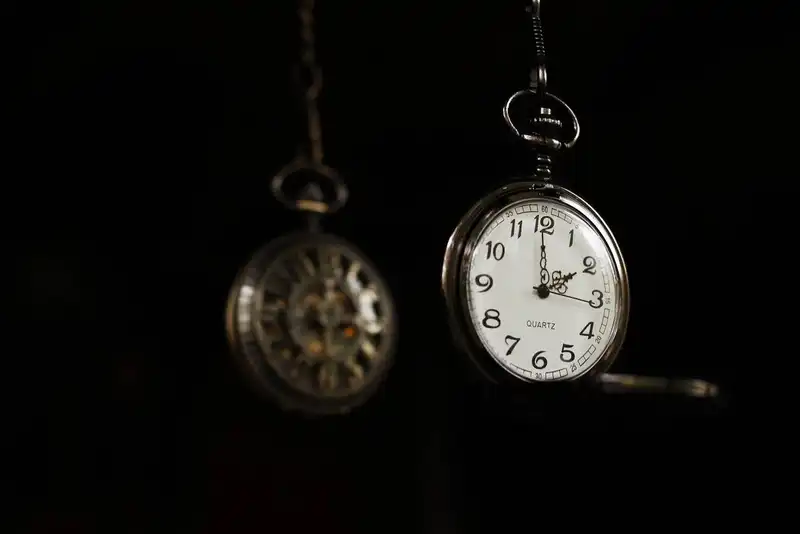Time Card Calculator- Rules, Benefits & Calculations
Insight into Time Card Calculators
A time card and time clock are commonplace in the restaurant business industry. In fact, employees already frequently use time cards alongside time clock tools. Employee time cards enter time clock tools in order to affix printed time stamps for payroll processing and record keeping. Workers use time cards to clock time in and out in addition to any lunch break or snack break taken.
A time card and time card calculator are incredible restaurant business tools for both individual employees and the overall business. A time card allows businesses to easily record clock times that an employee works. An online time clock system tracks when an employee clocks time in and out. Additionally, any lunch break or snack break took is factored into time card calculator figures. As the pay period ends, online time clock and time card systems generate a time sheet for review.
A time card supplies time tracking capabilities and allows employees to check their work hours for accuracy. An online time card and time clocks permit employees to review their pay rate and any overtime hours worked. Employee pay rate can be evaluated through gross pay or per hour in real time. Employees can check hours worked per day or biweekly as well as total hours worked per week or month. Ultimately, online time tools benefit employees outside the work week and during work hours.
Human resources departments use time tools to handle gross pay itemizations and calculate overtime or other employee time factors. Manual hours calculator or time tracking is a massive drain on employee time and energy. Online time clock and time cards negate employers needing to manually calculate gross pay or factor hour overtime in. In fact, an online time clock system can produce 100% accuracy with minimal or no effort required by employers. Human resources professionals can instead use time more productively on processes that are not easily automated.
Why are Time Cards Important?

Manual hours calculator errors are commonplace especially with pay rate and break time variances. Even a simple pay rate mistake or hour overtime miscredited can cause huge issues. For example, it is not uncommon that an hours calculator will need to redo calculations if payroll notices an error. As such, a time card calculator avoids an abundance of wasted employee time and money.
Both bad time sheet and time card management has serious restaurant business consequences. For example, in the above situation, if payroll did not notice the hours calculator error. In that instance, a business would either overpay or underpay multiple employees or an individual employee. Labor costs make up a significant portion of a restaurant business budget. Even time card and time clock punch rounding can make or break restaurant business budget objectives.
Inaccurate time tracking and employee scheduling records are a significant consequence of bad time sheet and time card management. When time tracking and employee scheduling records are inaccurate, restaurant businesses are susceptible to legal consequences. Additionally, time tracking and employee scheduling errors make accurately estimating free time off impossible. The result could be free time off such as paid time off inaccurately granted or denied.
The Benefits of Using Time Cards
Different businesses may have different employee time processes but can all benefit from time card utilization. From higher productivity to labor law compliance, there are many notable time card benefits. Significant benefits that time card usage offers businesses include-
1. Productivity

Employees that use a time card often find their productivity levels heightened. With heightened productivity levels comes higher business profitability. As such, higher employee productivity directly translates into a higher business bottom line.
Time cards help measure employee productivity levels and optimize resources. Human resources, or a business's employees, are well worth investing in. Remember, human resources are the most important resource that any business has.
In fact, most large businesses have a designated human resources department to deal with all employee time processes. From employee scheduling to pay rate negotiations, the human resources department depends on employee time accuracy. When employee hours are best utilized, the entire business directly benefits.
2. Control
Employee time processes can require many dedicated work hours per day from human resource staff members. With the automation that an employee time clock and card calculator supply comes outstanding control. As a result, processes like employee scheduling and time tracking are streamlined and simplified.
Employee time is essential to overall business operations and labor cost control. When employee time is optimized, labor costs are much more easily controlled. Thankfully, there are helpful tools available such as a time clock mobile app or a free online time card calculator.
Everything from calculating gross pay to total hours worked can be under control with the proper employee time tools. A time card calculator supplies businesses with the ability to control employee time more comprehensively. For example, overtime hours are easier to avoid with total hours worked reflected in real time. An employee can view the progression of a designated lunch break or snack time break when they use time clocks. A free time clock mobile app can even offer military time compatibility. Bottom line, the easier it is for both management and employees to use time tools the better.
3. Compliance

Labor law compliance is a top priority for businesses around the world. Human resources department professionals know that there are many different labor regulations and rules applicable. Failure to comply can land a business with a costly lawsuit and even force company closure.
Employee time tools can significantly assist businesses with avoiding violations. For example, before an hour overtime is worked, employee time tools can request managerial approval. An employee break time like a lunch break can be confirmed as taken. The referentiality that online time tools supply is invaluable for an audit. Management can easily look up work hours per day or per week for individual employees.
Wage and Hour Laws on Time Cards
The Fair Labor Standards Act outlines the wage and hour regulations that the U.S. Department of Labor oversees. There are various wage and hour laws that a time card must accommodate, dependent on location and other factors. An individual time card must be supplied to employees covered by the Fair Labor Standards Act and minimum wage regulations.
Under the Fair Labor Standards Act, specific time tracking and time keeping procedures and forms are not assigned. However, the Department of Labor does require accurate and comprehensive employee time information kept. A time card should include total hours worked and clock time in and out. The date and day of the week should be annotated on the time card for record keeping purposes. Employee gender, name, address, and SSN must be included within employee time records. Additionally, employee pay rate and occupational title must be recorded.
Employers must track weekly time even if the employee pay period is longer. For example, weekly time tracking is still required for employees paid bi weekly or per day for temporary gigs. Alternatively, weekly time tracking is also required for employees with a fixed work week and pay rate compensated monthly.
Both non exempt salaried and hourly employees working over 40 hours per week have specific rules. These employees must be paid 1.5 times their hourly pay rate for every hour overtime worked. An employee time card and related documents should be held for 2 years minimum.
How to Properly Calculate Time Card Hours

Tracking time is not a new human phenomenon. In fact, archeologists have located evidence of time recording dating back to 6000 B.C.! While humans tracking time is not new, there are new time tracking tools consistently made available.
Any manual hours calculator can attest to the difficulty and complexity of their role. There are various methods utilized in order to calculate employee hours worked. The most common method used to calculate employee hours worked is to clock time in and out. Additionally, any break time including a lunch break must be factored into total hours calculated.
Businesses can use different employee time tools depending on their needs and wants. An employer may require an employee to record hours worked on paper using a pen. Other employers use a punch system to clock time in and out. Employers then use time sheet and time card data to tally hours total for payroll processing.
There are both paid and free time card and time clock applications available. Online time tools can effortlessly calculate overtime for multiple employees with pay rate differences and other complex tasks. The benefits of online time clock and time card software are well worth annotating. Commonly cited benefits for individual employees include mobile app accessibility and online time tracking capabilities. For employers, compatibility like the ability to send employee hours directly to payroll software is appreciated.
Time Card Management Do's and Don'ts
Time card management is a crucial aspect of effective employee time processes. Even an office that has multiple employees with a similar pay rate and gross pay information can get complicated. For example, free time off and instances where employees clock time out early can both muddle otherwise straightforward calculations. Thankfully, there are time card management do's and don'ts that all restaurant businesses can utilize.
Time Card Management Do's

An accurate time tracking and time keeping system and policies are essential for time card management. These systems often incorporate time clocks and individual employee time card tools. All employee time must be logged, including when employees use time outside the office for work related tasks. Common examples of when employees use time outside of the work week include responding to emails or phone messages. An online time tracking system with mobile app accessibility makes this requirement much easier to fulfill.
Employee time rounding policies must be consistently applied and not universally in the company's favor. Additionally, time rounding policies must not result in a failure to accurately count hours worked by employees. However, a restaurant business must confirm time rounding policy compliance with their local labor laws and regulations. Any rest break time supplied that is 20 minutes or less must be paid. As such, employees should not use time clocks or time cards to record these breaks.
Time Card Management Don'ts
An inaccurate time tracking and time keeping system and policies are a recipe for restaurant business disaster. Withholding pay from employees that fail to submit a time sheet is an example of a time card management don't. Employers cannot withhold pay for unauthorized work hours performed. For example, if an employee works an hour overtime unauthorized, it must still be paid.
Employers must not permit employees to work off the clock, whether explicitly encouraged or implicitly suggested. Meal periods should never be automatically deducted from employee time compensated. A restaurant business must confirm rest break and lunch break compliance with their local labor laws and regulations.
Conclusion for Time Card Calculator

- A time card calculator is an outstanding restaurant business tool.
- A great time card calculator decreases human resources employee time spent.
- Improper time recording can lead to legal consequences and even business closure.
- Proper time recording increases compliance and productivity levels.





